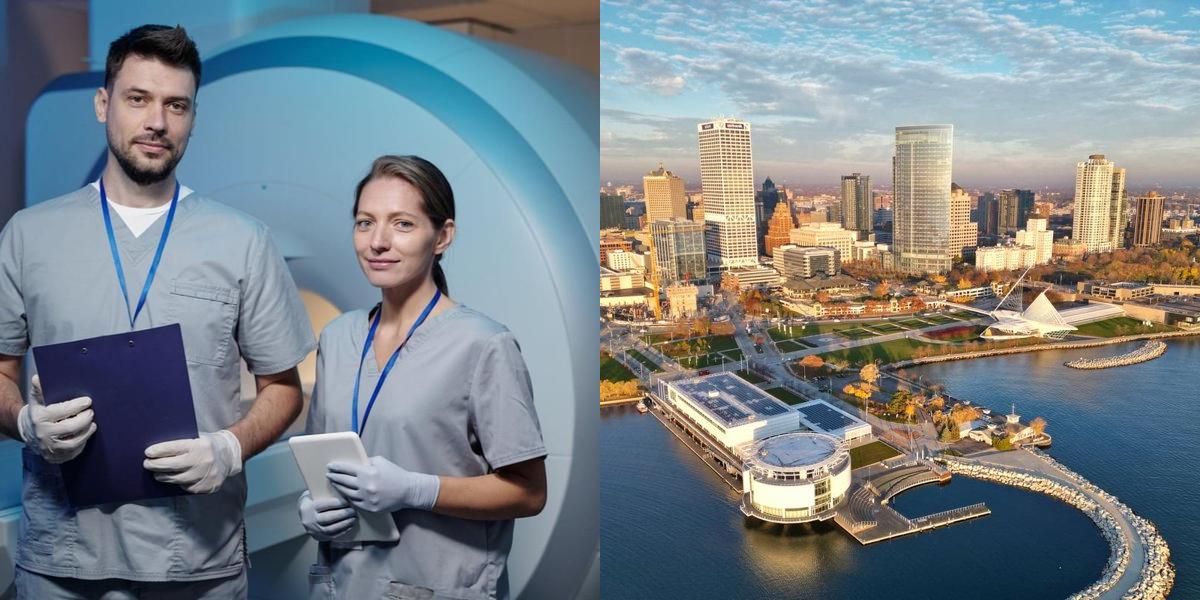How to Become a Radiology Technician in Wisconsin (2025)

If you want a career in Wisconsin's healthcare sector that perfectly balances advanced technology with direct patient care, becoming a licensed Radiologic Technologist is a direct, two-year path to a stable, high-paying job. With over 4,400 technologists in the state earning a median salary of $75,850 annually, according to the U.S. Bureau of Labor Statistics, the field offers strong security and income. This guide provides the definitive 5-step process to navigate Wisconsin's mandatory training, ARRT certification, and DSPS licensing requirements to launch your career.
How Long Does It Take to Become a Radiology Technician?
It typically takes two years to complete the required Associate of Applied Science degree in radiologic technology. This timeline includes all necessary classroom instruction and the clinical training hours required for ARRT certification.
What About Licensing in Wisconsin?
Yes, licensure is mandatory in Wisconsin. You cannot legally work as a Radiologic Technologist without a valid license from the Wisconsin DSPS. To renew your license every two years (by August 31 of even-numbered years), you must complete 24 hours of continuing education.
Where to Find Radiology Technician Classes in Wisconsin?
Finding the right JRCERT-accredited program is the most important decision you'll make, and Dreambound is designed to simplify this process. Dreambound's platform allows you to search, filter, and connect with a vast network of career and technical education partners, including colleges offering radiologic technology degrees across Wisconsin. You can compare schools based on program length, cost, and location to find the perfect fit for your career goals.
Career Paths and Opportunities after Becoming a Radiology Technician
A career as an RT in Wisconsin offers significant room for growth. Common career advancements include:
- CT Technologist: Specialize in operating computed tomography scanners to create detailed cross-sectional images.
- MRI Technologist: Operate magnetic resonance imaging scanners, which use magnetic fields instead of radiation.
- Mammography Technologist: Focus on performing breast imaging for cancer screening.
- Radiology Manager: Move into leadership roles, overseeing the staff and budget of an imaging department.
- Radiology Educator: Teach at a technical college or hospital program to train future RTs.
How Much Do Radiology Technicians Make in Wisconsin?
According to the latest data from the U.S. Bureau of Labor Statistics (May 2024), the median annual wage for Radiologic Technologists in Wisconsin is $75,850 (approx. $36.46 per hour).
- Entry Level: Starting salaries typically range from $55,000 to $60,000.
- Top Earners: Experienced technologists, especially those with multiple modalities like MRI or CT, can earn over $95,000.
Frequently Asked Questions
How Long Does It Take to Become a Radiology Technician?
Most programs take 2 years for an associate’s degree, the most common pathway. Bachelor’s degree programs take 4 years.
How Much Does a Radiology Technician Earn in Wisconsin?
According to the Bureau of Labor Statistics (May 2024), radiology technicians in Wisconsin earn an average of $75,850 per year ($36.46/hour). Salaries can vary based on experience, specialization (CT, MRI, mammography), and work setting.
What Are the Key Responsibilities of a Radiology Technician?
Radiology Technicians perform diagnostic imaging procedures, position patients for scans, ensure radiation safety, and assist radiologists in interpreting results.
Does Wisconsin require a state radiology license?
Yes, Wisconsin requires state licensure for all radiologic technologists. You must provide proof of 24 continuing education credits every two years for renewal of your license.
Final Thoughts
If you’re ready to combine technology, patient interaction, and a strong job outlook, radiologic technology could be a perfect fit. With accredited training, ARRT certification, and a Wisconsin state license, you’ll have access to stable employment, competitive pay, and opportunities to grow in the medical imaging field.
Dreambound offers a window into various career paths, so if you're considering a shift in your career, browse through these articles:

Athena is Co-founder and CEO of Dreambound.



